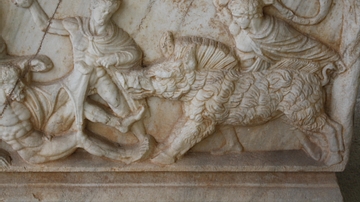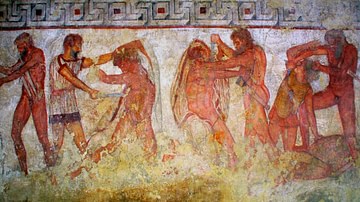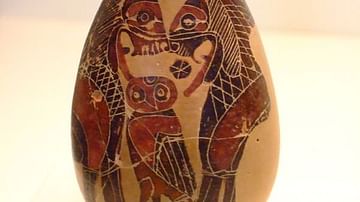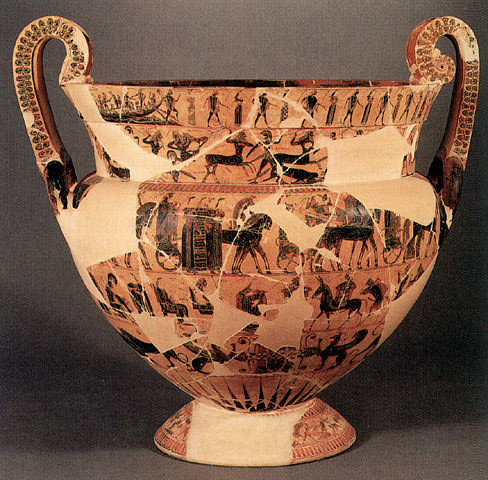
The François Vase is a large Attic volute-krater dating to c. 570-565 BCE, and it is perhaps the example par excellence of the black-figure pottery style. An astonishing range of scenes and characters from Greek mythology cover the vase and make it an important reference for these stories, some of which no longer exist in written form.
The vase was discovered in c. 1845 CE in Chiusi, Etruria (central Italy) by the Italian, Alessandro François. François passionately searched for the missing pieces of the vase but unfortunately without success. Nevertheless, it is the most complete surviving example of this form of vase. The volute-krater was a form most probably inspired by earlier bronze vases and was used for wine. An early example of the black-figure style, the vase is 66 cm (26 inches) high and signed in two places: “Ergotimos made me; Kleitias painted me”, two celebrated crafsmen in Attic pottery and frequent collaborators. The vase is covered with 270 human and animal figures along with several objects such as altars, columns, fountains, and furniture, all painted in black, purple, and white on the pale orange, clay background. Unusually, the figures and objects are painstakingly labelled with 121 inscriptions.
Six friezes surround the vase with mythological scenes: two on the neck, three on the main body, and one around the foot. The top neck band illustrates the Calydonian boar hunt with Peleus, Meleager, Melanion, the Dioskouroi and Atalanta and on the reverse, the celebrations (geranos) of the Athenians and Theseus after his defeat of the Minotaur at Knossos. The lower neck band shows the battle between the Lapiths and the Centaurs at the wedding of the Lapith King Peirithoos. Theseus is present, fighting on the side of the Lapiths, the only such instance in Attic pottery. The funeral games of Achilles' great friend Patroklos, with several chariots racing, is on the reverse side.
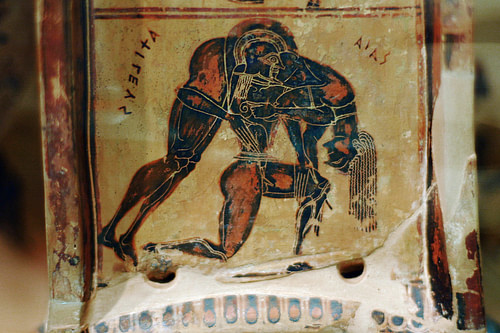
The top band of the vase body shows the gods at the wedding of Peleus and Thetis. The middle band shows a scene from the Trojan War: Achilles' pursuit of Troilos, who is on horseback, with his father Priam looking on from the walls of Troy. On the reverse side of this band is the earliest and most complete representation of the Return of Hephaistos myth, where the Olympian gods await the god of metallurgy's return to Olympus to release Hera from her imprisonment in the magic throne that he had created (in order to win Aphrodite as his bride). The lower band shows lions and various mythical animals such as griffins and a pair of heraldic sphinxes. The foot of the vase illustrates a comic battle between goat-riding Pygmies wielding curved sticks and aggressive looking cranes. In addition, on the sides of each handle there is a painted Gorgon, Artemis with an animal in each of her hands (in a Mistress of the Animals pose) and Ajax carrying Achilles.
Incredibly, the vase was smashed into 638 pieces in an outrageous protest by a museum guard in 1900 CE. However, meticulous restoration has ensured this magnificent and important piece continues to enchant modern visitors to the Archaeological Museum of Florence.
